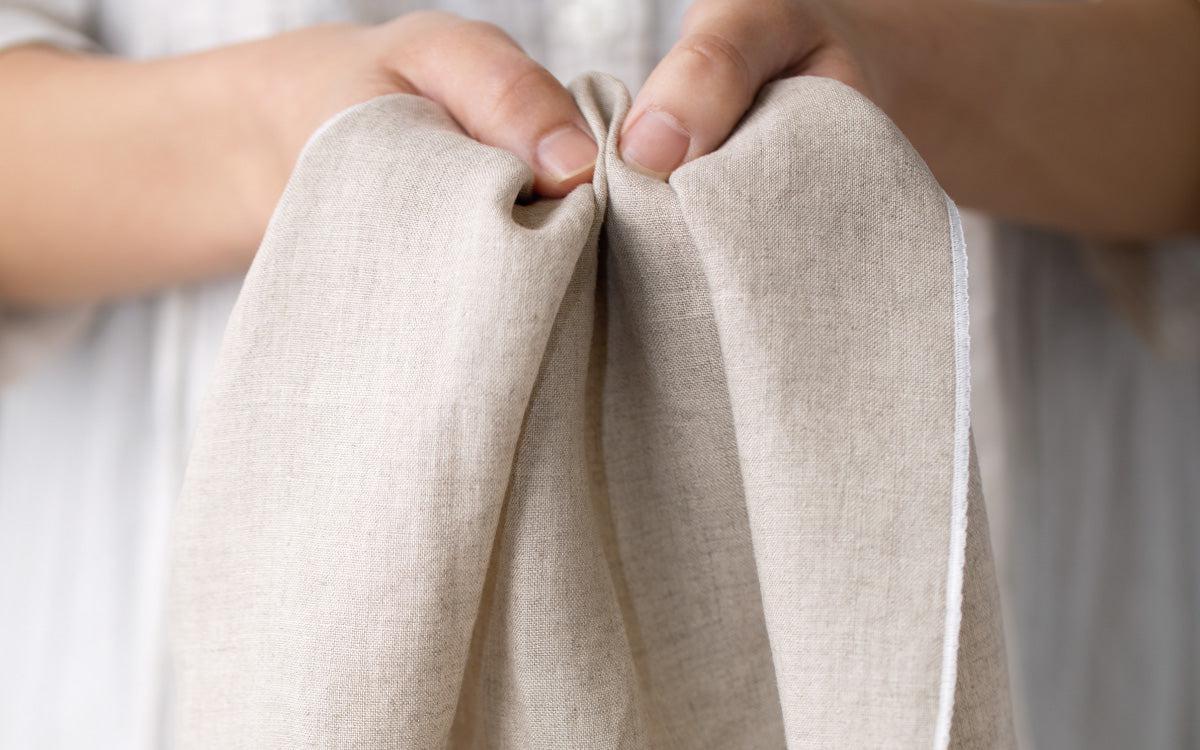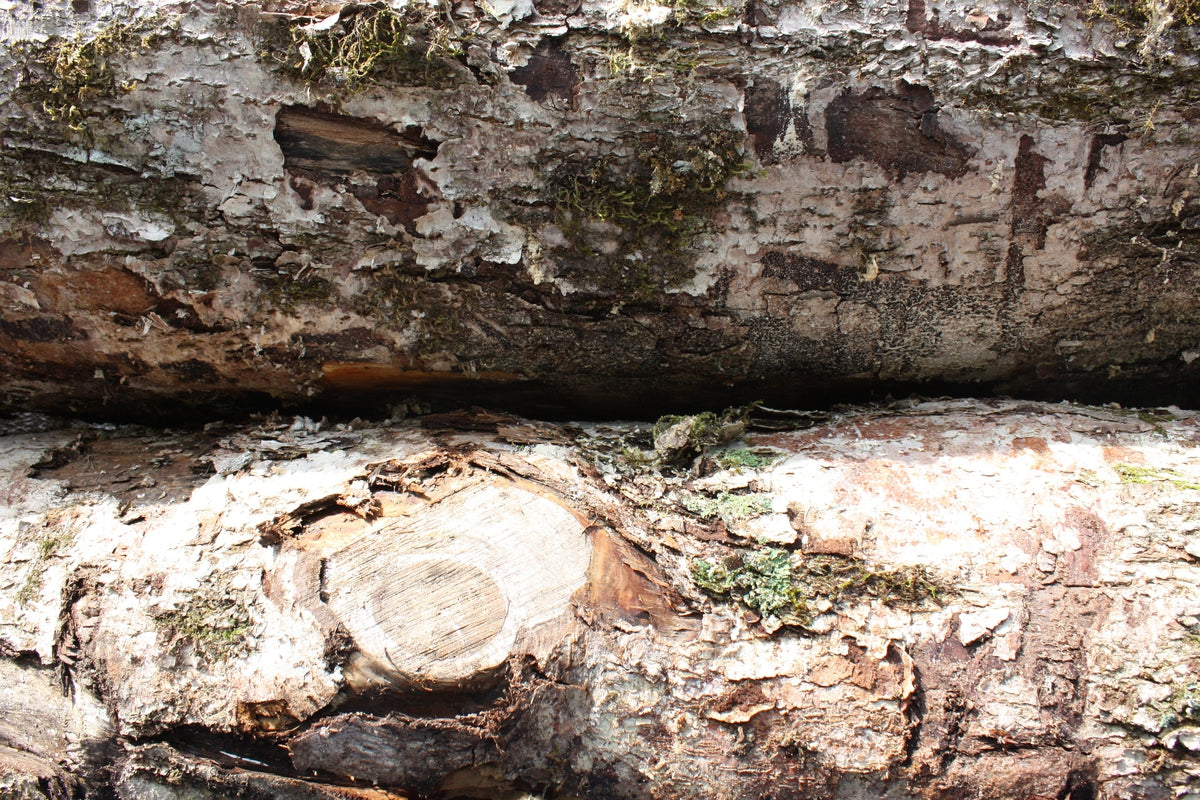Linen Handkerchief White x White
在庫数: 2
Couldn't load pickup availability
- # 60番手薄手リネン生地
- # ネコポス配送5個まで
- # ハンカチ
- # 亜麻(リネン)
- # 四角布
- # 織生地
- # 麻
I made it with the aim of making a linen handkerchief that can be used everyday without being pretentious.
You can wash it without worrying about it, you can use it after washing it, it feels good on the skin, it absorbs water well and dries quickly. It's delicate and easy to use, but with the luster and texture unique to linen, it also has a sense of cleanliness and elegance.
Linen is a material that is both absorbent and quick drying. If the fabric isn't glued too tightly and the amount of thread used is good, it's comfortable to use during the rainy season and summer in hot and humid Japan, and it dries well after washing.
I think that many people have a strong image of linen as a material that has been firmly ironed like a tablecloth or bed linen, and conversely, it has an image of being stiff and stiff with a lot of fluff. Depending on the occasion and the quality of the thread, this image may be biased, but if you use good thread raw materials, a thread amount, and a fabric that is suitable for the occasion, it is an excellent material that can be used every day, and is particularly suitable for the climate of Japan. It works well.
Moreover, no special care is required. In fact, linen is a material that has been handed down from generation to generation and is also used for military purposes, and is a highly durable material. It's nice to iron it and use it neatly, but it's not only that, it's washed out and you can use it roughly. The texture of the fabric is also good, and the more you use it, the softer it becomes. This will make it less likely to wrinkle. Personally, I feel strongly attracted to the fact that you can use it on a daily basis without hesitation and enjoy growing it like leather or denim.
The fabric used for this handkerchief is a 100% linen fabric woven with an old-fashioned shuttle loom using fine threads of about 60 count. Good spun threads are densely woven with a shuttle loom and finished with a soft finish, giving it a moist, soft and smooth touch. The texture is not too thin or too delicate, so the fabric will not be removed when you use it, and you can wipe off the moisture.
This white fabric color is extracted from the original unbleached color (close to beige) of linen fiber, but even in the bleaching process, we use materials and manufacturing methods that are less harmful to the environment and fibers. It is not pure white, which is close to fluorescent white, but it is a natural white, also called off-white.
*We used to use organic linen fabric, but it became difficult to procure raw materials for the yarn, so we can no longer continue. We use the same fabric with the same count, density and color, but with non-organic yarns.
The edge of the handkerchief is finished with a rolled lock with maximum thread density. Other colors are available.
*The type and method of attaching the name tag on the lower right of the photo has been changed to the specification of the white x gray photo here.

The maker of this linen fabric is a craftsman who has inherited the tradition of Omi Jofu in the Omi Koto production area in Shiga Prefecture, and now mainly manufactures fabrics for apparel collection brands.


We carefully weave at a speed of 1m to 2m per hour with an old-fashioned shuttle loom.
Compared to the rapier looms that are mainly used today, the production speed is much slower, but the density and texture of the fabric can only be achieved with shuttle looms.
Since linen tends to break when a force is applied to it while it is being woven on a loom, the threads will break during the weaving process, and the threads will be tied one by one by hand as the work progresses.
Weaving with this shuttle loom requires not only skill, but also perseverance and time. Thick and durable threads such as cotton denim and canvas are still woven with shuttle looms, but 100% linen fabrics made with shuttle looms are rare.


This is what is called the shuttle, through which the weft thread is passed through the shuttle loom.
It is made of heavy wood and moves back and forth from side to side to pass the weft threads. Its movement is like a satellite, so it is called a shuttle (satellite). On the other hand, modern rapier looms are designed to fly the weft with an air jet. Even with this difference alone, I think you can imagine the difference in speed.
Linen is difficult to handle when weaving, and thin threads are particularly easy to cut, making fabric production more difficult.
This fabric is woven with high density using 60 thread, which is often used for shirts and other thin threads. When you think of linen, you may have an image of a slightly uneven thread, but you can see that it is a straight and beautiful thread. The work of the process of making yarn called spinning is reflected here. If the thread is bad, it is difficult to weave it tightly and densely, so it is necessary to ensure that the quality of the entire process is consistent. The high-density weave prevents fluff from standing up, and the use of plenty of threads also increases water absorption. Also, the combination of fine threads and high density creates a smooth texture.


Due to the characteristics of linen fibers, especially in the case of fine counts, it does not produce straight threads like synthetic fibers or cotton, but there are few neps, etc., resulting in beautiful threads and woven fabrics.
Linen is a material that is strong enough to be used for a long time and has a rich expressiveness that changes over time. In particular, this ultra-thick fabric is more durable, so I hope you can enjoy the changes that gradually grow while using it for a long time.
The unbleached color photo below is of the same specification but in a different color. This color is currently out of production, but please take a look at the texture of the fabric.


【material】
100% linen
【size】
45×45cm
Due to the soft processing finish, there is almost no shrinkage.
[exterior]
none
[Handling and care]
When washing, please be careful not to use a dryer, bleach, softener, fluorescent whitening agent, etc., as the texture of the fabric may change significantly.
When ironing, it is recommended to use a medium or lower heat setting instead of a high setting. When setting the high temperature, apply a pressing cloth.
*Frequently Asked Questions/Supplementary Comments*
・There are other types of thread colors for the winding lock on the edge.
・We used to use organic linen fabric, but it became difficult to procure the raw material for the yarn, and we are no longer able to continue using it. We use fabrics with the same count, thickness and color, but with non-organic yarns.




































